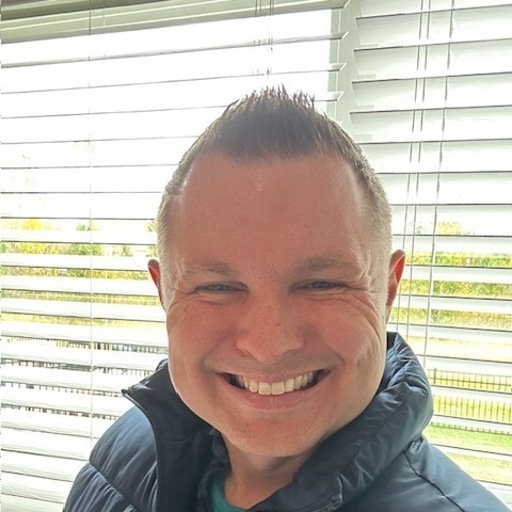I Wouldn't Use These Types of CD Accounts Right Now
The good news is you can earn over 4% on many CDs. However, there are three types of CDs I wouldn’t currently recommend.

In a world of not many sure things, a certificate of deposit is a rarity. You can store money in it, helping you earn a guaranteed return on investment.
And they’re perfect for short-term goals. Need to save for a vacation home, a dream trip or a side business you wanted to start up since retiring? A CD can help you reach them.
Best of all, you can earn rates above 4%. The latest CPI report shows inflation at 2.9%, which allows you to outpace inflation. At least, for now.
From just $107.88 $24.99 for Kiplinger Personal Finance
Become a smarter, better informed investor. Subscribe from just $107.88 $24.99, plus get up to 4 Special Issues

Sign up for Kiplinger’s Free Newsletters
Profit and prosper with the best of expert advice on investing, taxes, retirement, personal finance and more - straight to your e-mail.
Profit and prosper with the best of expert advice - straight to your e-mail.
Things to consider with a CD
CDs work best when you view a portion of your money as untouchable until you reach your goals. The reason for this is if you open a certificate of deposit and need to withdraw your money before your term expires, well, banks don’t like it.
In turn, you’ll have to pay an early termination fee since removing a portion of your money from a CD closes it. That penalty fee will likely offset the interest you earned. If you want more flexibility in savings, either consider a no-penalty CD or a high-yield savings account.
Even so, CDs are excellent saving vehicles. I’ve used them for three and six month savings goals, and they’ve done well for me.
With these things in mind, there are many CD types available. Here are three I would recommend against, at least for the time being.
1. Long-term CDs
Long-term CDs allow you to set money aside for three to five, even 10 years in some cases. When interest rates on savings are high, it’s a home run option for risk-averse savers.
CDs come with fixed interest rates, meaning the rate you lock in is the one you’ll have until the term expires.
However, they also work best if you already have an emergency fund of at least six months and are on your way to reaching your investment goals. Keep in mind that if you need to break open your CD early, the penalties for longer-term CDs are substantial, costing you six months to a year of earned interest.
Another thing to keep in mind is that we don't know how high prices will increase in the next few years. If they rise considerably, it can lower the returns you earn on a long-term CD.
And without the flexibility to switch (unless you're willing to pay the early termination fee), you might limit your potential earnings with this approach.
This is why shopping around for the best rates and terms is essential to finding your perfect CD match. You can use this Bankrate tool to compare and select your best choice quickly:
2. Callable CDs
A callable CD is unique in that your bank might decide to end the term before its maturity date. The most likely reason a bank calls it early is if interest rates lower, as they wouldn't want to be on the hook paying higher rates.
These CDs also have what’s known as a call protection term. During this term, your bank cannot call your CD to mature, giving you time to earn some money on it.
While these CDs can offer higher rates of return than a regular CD or even high-yield savings accounts, the decision on when to end it can be out of your hands. This can limit the returns you earn compared to a regular CD, where you won’t have to worry about your term ending prematurely.

3. CDs from traditional banks
Traditional banks might not offer as high a return as their online predecessors. To demonstrate, a 12-month CD with Huntington Bank earns you 0.50% APY. Meanwhile, a 12-month CD with Prime Alliance Bank earns you 4.15% APY.
The difference is that Prime Alliance doesn’t have physical locations. That means less overhead they have to pay. Therefore, while physical banks offer convenience, that comes at a cost.
Furthermore, if you don’t feel comfortable switching to an online bank, see if your local branch has any promotional rates. They usually do these on shorter-term CDs, allowing you to maximize savings in a quicker window.
The bottom line on choosing the best CDs
CDs are a solid choice for savers with a low-risk tolerance, offering a guaranteed return. Right now, many terms pay around 4%. However, if maximizing savings is your priority, you may want to avoid CDs with traditional banks, callable CDs and long-term CDs, as they often come with lower rates, withdrawal restrictions or added risk.
If you're saving for five or more years, investments have historically offered higher returns. Callable CDs and those from traditional banks can also limit your earnings — callable CDs may be redeemed before maturity, cutting interest short, while brick-and-mortar bank CDs often come with lower rates.
Related content
Profit and prosper with the best of Kiplinger's advice on investing, taxes, retirement, personal finance and much more. Delivered daily. Enter your email in the box and click Sign Me Up.

Sean is a veteran personal finance writer, with over 10 years of experience. He's written finance guides on insurance, savings, travel and more for CNET, Bankrate and GOBankingRates.
-
 Nasdaq Sinks 418 Points as Tech Chills: Stock Market Today
Nasdaq Sinks 418 Points as Tech Chills: Stock Market TodayInvestors, traders and speculators are growing cooler to the AI revolution as winter approaches.
-
 23 Last-Minute Gifts That Still Arrive Before Christmas
23 Last-Minute Gifts That Still Arrive Before ChristmasScrambling to cross those last few names off your list? Here are 23 last-minute gifts that you can still get in time for Christmas.
-
 The Rule of Compounding: Why Time Is an Investor's Best Friend
The Rule of Compounding: Why Time Is an Investor's Best FriendDescribed as both a "miracle" and a "wonder," compound interest is simply a function of time.
-
 23 Last-Minute Gifts That Still Arrive Before Christmas
23 Last-Minute Gifts That Still Arrive Before ChristmasScrambling to cross those last few names off your list? Here are 23 last-minute gifts that you can still get in time for Christmas.
-
 4 Great Tools to DIY Your Own Financial Plan
4 Great Tools to DIY Your Own Financial PlanSmart Savings Several tools picked out by Kiplinger that DIYers can use to make their own financial plan.
-
 The 7-Month Deadline That Determines Your Lifetime Medicare Premiums
The 7-Month Deadline That Determines Your Lifetime Medicare PremiumsUnderstanding Medicare enrollment is crucial, as missing deadlines can lead to permanent late enrollment penalties and gaps in coverage.
-
 Should You Renew Your CD?
Should You Renew Your CD?With rate cuts impacting earnings, we examine if now is a wise time to renew CDs.
-
 Where to Store Your Cash in 2026
Where to Store Your Cash in 2026Set yourself up for success with these strategies.
-
 I'm a Financial Adviser: The Fed's Rate Cuts Could Have Impacts You Might Not Anticipate
I'm a Financial Adviser: The Fed's Rate Cuts Could Have Impacts You Might Not AnticipateUnderstanding how lower interest rates could impact your wallet can help you determine the right financial moves to make.
-
 My Teen Crashed His Car, and Now Our Insurance Has Tripled. What Now?
My Teen Crashed His Car, and Now Our Insurance Has Tripled. What Now?Dealing with the costly aftermath of a teen car accident is stressful. Here are your options for navigating it.
-
 My First $1 Million: Retired In-House Corporate Lawyer, 74, Midwest
My First $1 Million: Retired In-House Corporate Lawyer, 74, MidwestEver wonder how someone who's made a million dollars or more did it? Kiplinger's My First $1 Million series uncovers the answers.